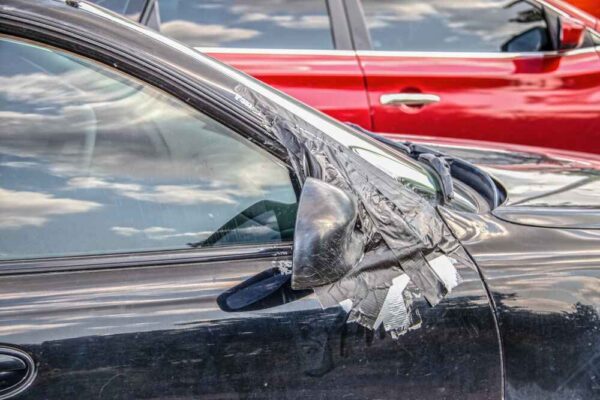
The Ideal Height and Weight to Sit in Front Seat -Ontario Full Guide
Child Car Seat Regulations in Ontario
Modern cars are created on a safety-first basis. Safety features, like airbags and seat belts, weren’t available in very early models, but are now in every vehicle, saving millions of lives. That being said, these safety features are designed for adults, not children. That’s why, children in cars have their own safety measures.
One important safety measure is to only let a child sit in the front seat after they’ve fulfilled specific requirements related to age, height and weight. If you want to learn when it’s safe to let the little one sit in the front seat and other passenger safety tips, stick around.
When Can a Child Legally Sit in the Front Seat in Ontario?
In Ontario, car seat laws suggest that a child is only safe to sit in the front seat at the age of 8 and up. That being said, the child has to meet specific height and weight requirements.
The child must weigh 36 kilograms (80 lbs .) or more, and be 145cm (4 feet 9 inches) tall or taller. Before the child reaches this age, weight, and height, they should go through the following car seat stages:
What Are the Height and Weight Requirements for Sitting in the Front Seat and Car Seat Stages?
First Stage: Rear-Facing Car Seat
From the moment a child is born, they are only safe in a car when they’re carefully seated in a child car seat. So, we advise buying a rear facing car seat before the child is due, to make sure it’s safe to drive them home from the hospital.
Height and Weight Requirements in the First Stage:
A child stays in the rear-facing car seat until they weigh 20 pounds (9 kg) and slightly above. These car seats are the safest option for smaller children because they keep the child’s head in place in case of a sudden stop or crash.
An infant’s head is large in proportion to its body, so any hit could damage its spine or head. The ideal place for the rear-facing child car seat is in the middle of the back seat away from active air bags.
Car Seat Safety Tip #1
Not all car seats are suitable for all children and all vehicles. Make sure the car seat is suitable for your child’s weight and height. Moreover, you should also double-check that it’s the right car seat for your car and will get installed correctly and easily each time. A proper car seat provides protection for your child.
Second Stage: Front-Facing Child Car Seats
Height and Weight Requirements in the Second Stage:
A child weighing more than 20 pounds (9 kg) with a maximum weight of 40 pounds (18 kg) is safe to sit in the forward-facing car seat. This car seat faces the front of the car like the rest of the passengers.
Make sure to follow the installation instructions carefully, as each car seat has its own different safety instructions. Usually, the front-facing car seat requires an item to strap it, like a five-point harness or tether strap. A front-facing child car seat is also ideally placed in the middle of the back seat.
Car Seat Safety Tip #2
Installing the car seat correctly is crucial to ensure the safety of your child. First, read the manual and try to understand where each part of safety seat fits in your vehicle. A car seat should be strapped with a shoulder belt or lap belt, but not both.
The seat belt should be placed across the child’s shoulder but not on the neck or the face to avoid discomfort. Avoid using seat belt adjusters as they might be too tight. For extra child’s safety, a good option is to visit car seat clinics to check that the seat is installed correctly and everything is in place.
Third Stage: Booster Seat
Height and Weight Requirements in the Third Stage:
It should be okay for a child to use a booster seat if they’re 40 pounds (18 kg) or larger. Booster seats are easier to install than car seats. A child weighing as much is now old enough to handle starting and stopping. Still, a traditional car seat and vehicle seat belt might be too big for them, safety-wise. So, that’s where the booster seat is helpful.
Generally, a child should remain in the booster seat as long as they’re uncomfortable with regular car seats and seat belts. We advise reading the guidelines that come with the booster seat.
Booster Seats Safety Tip
The booster seat should be forward-facing, placed in the middle of the back seat. Make sure the lap seat belt crosses the child’s hip, low, flat and tight. The shoulder belt should also be flat and snug across the child’s shoulder without touching their neck and face. The child should sit comfortably in the booster seat throughout the car ride.
Fourth Stage: Front Seat and Seat Belt
Height and Weight Requirements in the Fourth Stage:
- At least age of 8, or weight of 80 pounds (36kg) and height of 145 cm (4 feet, 9 inches).
- The seat belt should fit snugly across the hips and chest.
- The child should be able to bend their knees comfortably at the end of the car seat.
- The child should be able to sit upright and still throughout the car trip. If they can’t, they should remain in the booster seat even if they meet the age or height and weight to sit in front seat.
- Ontario laws hold the driver responsible for the safety of children under the age of 16.
- It’s recommended that the child stays in the back seat until the age of 13 to avoid the risks posed by active airbags.
Why It’s Crucial to Follow Car Seat Safety Tips?
For children to sit in the front seat, they must meet the height and weight requirements. The main reason is airbags. Airbags are designed to protect adults in a crash but can be deadly for children. An airbag deploys at 210 km/h, and for a child who is not tall enough or heavy enough, this can cause head, neck and spine injuries. Transport Canada says children under 13 should be in the back seat where they are better protected from the front airbags. Even with proper use of seatbelts, the force of an airbag can be too much for a child’s smaller and more fragile body.
Plus, having children in the back seat reduces their risk of injury in a crash. Studies show a child’s risk of injury decreases by 33% when in the back vs front. Canadian regulations recommend children use booster seats until they fit properly in a seatbelt, which is usually around 4’9” tall. This ensures the seatbelt can function correctly, across the upper thighs and middle of the shoulder, for maximum protection. By following these guidelines, parents can prevent serious injuries and keep their children safe on the road.
How to Know if Your Child Can Stop Using a Booster Seat:
- Ensure they can sit with their back and bottom flush against the vehicle seat comfortably for the entire ride.
- Check that their knees bend at the edge of the seat and their feet rest flat on the floor without slouching.
- The lap belt should be snug across their hips, not their belly.
- The shoulder belt should be centered on their shoulder and not too close to their neck or face.
- Make sure they sit correctly and do not lean, lie down, or stretch out of the seat belt. If they can’t maintain proper positioning, they should remain in a booster seat.
Readmore:
Ideal Height and Weight to Sit in Front Seat: Wrapping up
It’s vital to make sure your child meets the height and weight requirements before they sit in the front seat. Airbags are lifesavers for adults but can be deadly for children if they deploy with force. Transport Canada studies and regulations state children under 13 are safest in the back seat, reducing their risk of injury by 75% in a crash. Using booster seats and seatbelts properly will also increase safety as ill-fitting seatbelts can fail to protect in an accident. Following these guidelines not only meets Canadian laws but gives you peace of mind your child is safe and secure on every drive.
You Might Want to Read
June 15, 2025
Sideswipe Collision: Who Is at Fault in Sideswipe Accidents?
June 15, 2025
Least Depreciating Cars in Canada
June 5, 2025
Welcome to the Team Keyes Insurance


